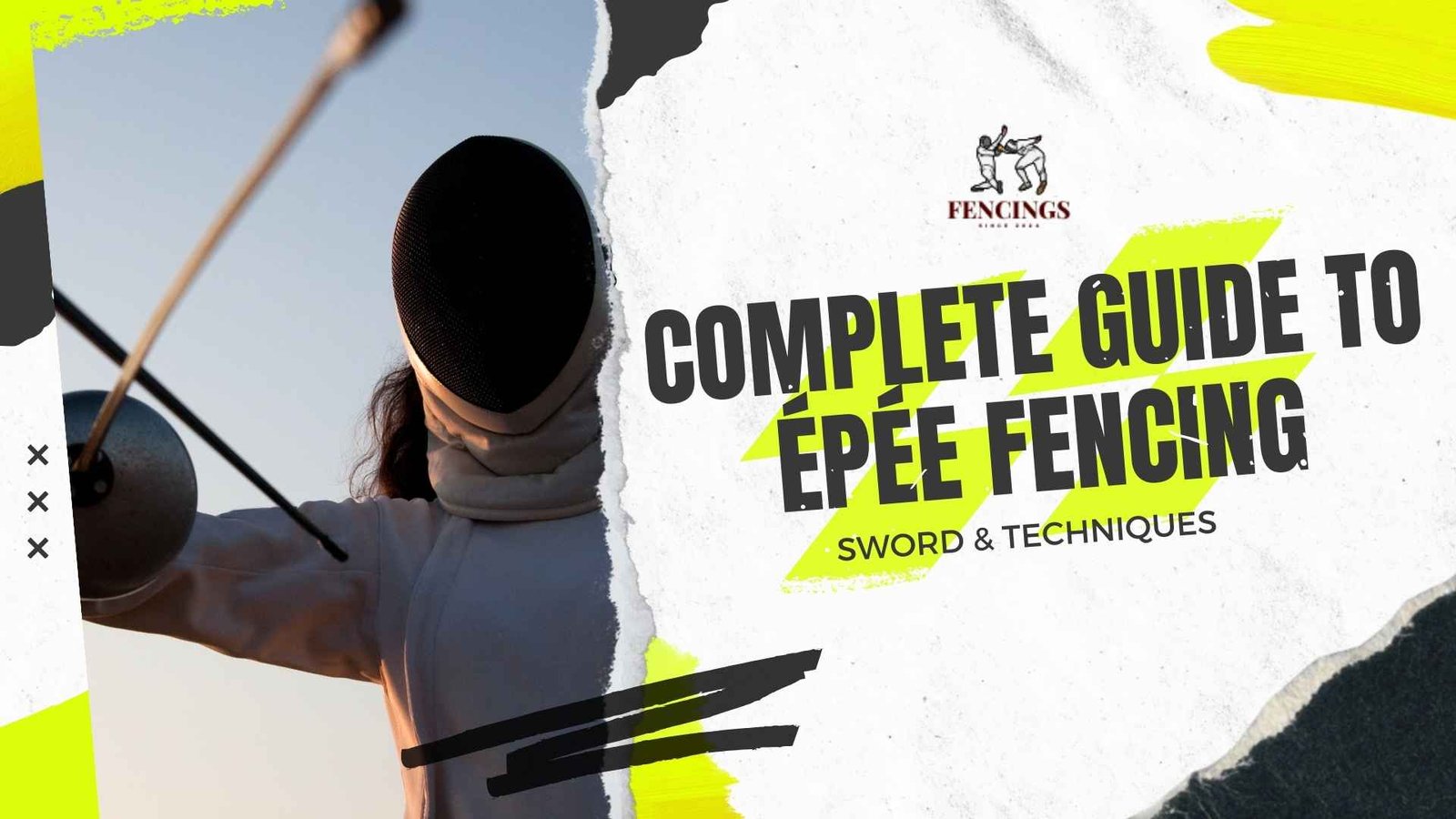Fencing is undeniably one of the world’s most stylish and strategic sports. Among its 3 disciplines—foil, sabre, and épée—the épée stands out for its specific rules, wonderful characteristics, and the annoying abilities it calls for. Whether you are a beginner, a competitive athlete, or a fencing fanatic, knowledge of the épée deeply is vital to appreciating its role in this game.
This weblog will take you on a comprehensive exploration of the épée fencing sword. From its records and techniques to the significance of footwork and education, we’ll offer an outline of the entirety you need to know approximately studying épée fencing. By the cease, you will have a deeper appreciation for this discipline and actionable insights to better your expertise or performance.
What Is an Epee Fencing Sword?
The epee fencing sword is one of the three weapons used in modern fencing. It is distinct from the foil and sabre due to its heavier weight, larger guard, and unique scoring rules. Unlike foil or sabre, where specific target areas are defined (such as the torso or upper body), the entire body is a valid target in epee fencing. This makes it a more strategic weapon that requires patience and precision.
The word “epee” comes from the French term for “sword,” reflecting its origins in European dueling traditions. The epee evolved from 19th-century dueling swords used by nobles to settle disputes with honor. Today, it is a staple of competitive fencing worldwide.
A Brief History of the Épée Fencing Sword
The épée strains its starting place to 19th-century Europe, evolving from the smallsword, a weapon worn using nobles for self-defense and dueling. Unlike the foil—which was initially created as a training tool for dueling—the épée mirrors the unique smallsword extra carefully in each weight and functionality. It was constructed to simulate real combat conditions without the chance of deadly accidents.
Over time, épée fencing shifted from a tool of combat to a properly-defined recreation. It became one of the 3 weapon categories recognized in current fencing competitions. Unique among its counterparts, épée fencing prioritizes precision and strategy over pace, making it the maximum methodical and cerebral form of fencing.
What Makes the Épée Unique?
The épée sword is heavier and stiffer compared to the foil or sabre. Its defining characteristics encompass:
- Blade Length and Weight: Measuring as much as 110 cm and weighing as much as 770 grams, the épée is slightly heavier than the foil but balanced for ease of movement.
- Design: The épée capabilities a larger bell defense, which protects the hand, as hand strikes are legitimate in competition.
- Target Area: Everything is a legitimate goal. Unlike foil and sabre, where the goal location is limited, épée fencers can score points using hitting any part of their opponent’s frame.
This makes épée fencing slower-paced but particularly worthwhile for people who excel in strategy and persistence.
Mastering Épée Fencing Techniques
To succeed in épée fencing, athletes want to broaden a blend of offensive and shielding procedures. Here are a few foundational strategies:
Offensive Techniques
- The Thrust: The primary motion in épée fencing, involving an immediate attack toward an opponent’s target location.
- Feints: Fake a thrust or attack to confuse the opponent and create openings.
- Compound Attacks: Layering several actions to outmaneuver your opponent and land a hit contact.
Defensive Techniques
- Parries: Use your blade to deflect an opponent’s attack. Common parries consist of parry six (right facet of your frame) and parry 4 (left facet).
- Ripostes: Following a successful parry, supply a counterattack to attain.
- Distance Control: Dodge attacks by moving again or retaining sufficient distance, forcing your opponent to overextend.
Combining offensive creativity with protecting areas is prime to thriving in épée fencing.
The Crucial Role of Footwork and Positioning
Success in épée fencing begins from the floor up. Footwork and positioning are fundamental elements that dictate your potential to assault, defend, and capitalize on possibilities.
Perfecting Footwork
Basic moves just like the boost, retreat, lunge, and fleche (walking assault) shape the muse of épée footwork. Practicing those steps always guarantees smoother motion and advanced agility.
Maintaining Distance
Distance control is important because it forces combatants to show themselves whilst making attacks. Mastering various distances additionally helps in developing probabilities for quick counterattacks. Plan your attacks whilst preserving staying power to manage distance effectively.
Staying Safe with Proper Equipment
Safety is paramount in fencing, and épée fencing isn’t any exception. Here’s how to stay protected during practice and opposition:
Protective Gear
- Mask: Protects your face and neck. Ensure it meets the required opposition standards.
- Jacket and Breeches: Padded for comfort and designed to take in influences from the épée, those are non-negotiable for both practice and opposition.
- Glove: Shields the hand keeping the épée, which is especially useful because the hand is a legitimate goal in épée fencing.
Maintaining Your Épée
Regularly test the circumstance of your blade for flexibility and cleanliness. Additionally, make certain that the end mechanism is practical, as it at once affects scoring accuracy in suits.
👉Related Post: Fencing Sword Crossword Clue Solved: Unraveling the Mystery
Building Mental and Physical Resilience
Épée fencing is as lots a mental battle as it’s miles a bodily one. Here’s the way to put it together for the needs of the game:
Developing Mental Resilience
- Focus on Strategy: Épée is a game of persistence and analysis. Learn to read your opponent’s strategies and smash their rhythm.
- Practice Scenarios: Rehearsing suit-like situations sharpens decision-making below stress.
- Calm Under Pressure: Incorporate mindfulness techniques like respiratory exercises to live composed in the course of excessive-stakes fits.
Physical Training Regimen
- Strength Training: Focus on sporting events like squats, lunges, and deadlifts to build decrease-body electricity.
- Agility Drills: Cone drills and ladder sports beautify your ability to exchange instructions speedily.
- Endurance: Boost stamina with sprints and biking to remain via extreme matches.
The Thrill of Competitive Épée Fencing
Major Events
Épée fencing capabilities prominently in global events just as the Olympics, World Fencing Championships, and Grand Prix collection. These degrees highlight the game’s aggressive and strategic nature.
Iconic Épée Athletes
Some of the world’s fine épée fencers, like Gábor Boczkó and Nathalie Moellhausen, have left an indelible mark on the game. Studying their strategies can offer treasured insights for aspiring fencers.
How Does Scoring Work in Epee Fencing?
Scoring with an epee fencing sword follows simple yet distinctive rules compared to other weapons:
- A point is scored when the tip of the blade touches any part of your opponent’s body.
- Double hits are allowed if both fencers land touches within 40 milliseconds of each other.
- There are no priority rules (as seen in foil or sabre), meaning whoever lands first gets the point unless it’s simultaneous.
This scoring system encourages defensive strategies since every part of your body from head to toe is vulnerable.
Frequently Asked Questions About Epee Fencing Sword
1. What makes the epee different from foil or sabre?
The primary difference lies in target areas and scoring rules:
- In epee, any part of the body can be targeted.
- Foil restricts targets to the torso; sabre focuses on above-the-waist hits.
- Additionally, there are no priority rules in the epee.
2. How heavy is an epee fencing sword?
An epee weighs approximately 750 grams (1.65 pounds), making it heavier than both foil (500 grams) and a sabre (500 grams).
3. Can beginners start with an epee?
Yes! Many beginners find epees easier because they don’t have to memorize complex target zones or priority rules like those required for foil or sabre.
4. What type of grip should I choose?
The choice between a French grip (straight handle) or a pistol grip depends on personal preference:
- French grips offer greater reach but require more wrist strength.
- Pistol grips provide better control through ergonomic design.
5. Are there any famous athletes who specialize in epee?
Yes! Some notable names include Gábor Boczkó from Hungary and Nathalie Moellhausen from Brazil—both Olympic medalists known for their exceptional skills with this weapon.
Statistics About Epee Fencing Sword Usage
Based on data collected from international competitions between 2020–2024:
- Approximately 45% of competitive fencers worldwide prefer using an epee fencing sword, making it slightly more popular than foil (35%) but less so than sabre (20%).
- In Olympic events since 2000, men’s epee has been dominated by European athletes (70% medal share), while women’s events show increasing diversity with winners from Asia (30%) and South America (15%).
These statistics highlight how widely practiced this discipline has become globally.
Tips for Success with Epees in 2025
If you’re new to using an epee fencing sword, here are some tips:
- Focus on timing rather than speed—precision wins matches!
- Practice footwork drills daily; mobility gives you a tactical edge over opponents.
- Study videos featuring professional fencers like Yannick Borel or Ana Maria Popescu—they demonstrate excellent technique under pressure conditions!
Take Your Next Step in Épée Fencing Sword in 2025
Épée fencing gives a mix of athleticism, approach, and area in contrast to every other game. By mastering the techniques, footwork, and processes outlined in this manual, you may start your very own épée fencing adventure—or elevate your modern abilities to the next stage!
Feeling stimulated? Visit our website to discover more sources, courses, and recommendations for fencing enthusiasts. Don’t forget to proportion this post with fellow fencers or sports activities fans to spread affection for épée fencing!

